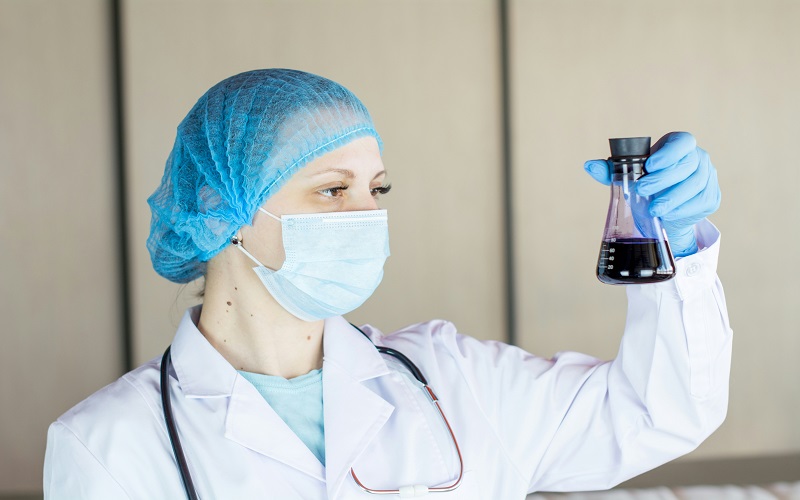Membrane proteins are integral to various cellular functions, from transport and signaling to cellular communication. Due to their unique positioning within the lipid bilayer, these proteins are challenging to isolate and purify, which complicates the study of their structure and function. This article explores the complexities of membrane protein isolation, the various techniques employed to purify these proteins, and the significant hurdles researchers face in their quest to understand their biological roles.
What Are Membrane Proteins?
Membrane proteins are proteins that are associated with, or embedded in, cellular membranes. They are categorized into two main types: integral proteins, which span the entire membrane, and peripheral proteins, which are attached to the membrane surface. These proteins are involved in vital cellular processes such as:
- Transport: Membrane proteins like transporters and channels control the movement of ions, small molecules, and other substances across the cell membrane.
- Signal Transduction: Receptors that respond to external signals (e.g., hormones or neurotransmitters) are a major category of membrane proteins.
- Cell Recognition and Adhesion: Some membrane proteins are involved in cell-cell interactions and maintaining tissue structure.
Because of their crucial roles, membrane proteins are major targets for drug development, especially in conditions like cancer, metabolic disorders, and neurodegenerative diseases. However, the amphipathic nature of these proteins (both hydrophobic and hydrophilic regions) makes their isolation and study especially challenging.
Challenges in Isolating Membrane Proteins
Membrane proteins have an inherent structural challenge: they are embedded in the lipid bilayer of membranes, which consists of hydrophobic (fat-soluble) regions that interact with the lipids, and hydrophilic (water-soluble) regions that interact with the aqueous environment. This dual nature means that these proteins are difficult to extract from their native environment without disrupting their functional integrity.
Moreover, once removed from the lipid bilayer, membrane proteins tend to lose their structural integrity or function unless carefully handled. Detergents and other methods used to solubilize the proteins can destabilize their conformation or cause aggregation, which requires advanced techniques to prevent.
Key Steps in Membrane Protein Isolation
- Cell Lysis and Membrane Disruption
The process begins with the breaking open of cells to release their intracellular contents. This can be done using:
- Physical methods like sonication (using sound waves), homogenization (blending), or bead milling, which use mechanical forces to disrupt the cells.
- Chemical methods, typically involving detergents or osmotic shock, which selectively break down the membrane. The choice of detergent is crucial, as it must balance the solubilization of proteins while maintaining their functional state.
- Membrane Fractionation
After breaking the cells, the next step is to separate the membrane fraction from other cellular components. This can be achieved by ultracentrifugation, a technique where samples are spun at high speeds to separate components based on their size and density. Membrane vesicles, which are denser than cytoplasmic proteins or organelles, will form a pellet that can be collected.
- Detergent Solubilization
Membrane proteins are solubilized from the membrane fraction using detergents. Detergents like Triton X-100 or DDM (n-dodecyl-β-D-maltoside) are commonly used because they break down lipid bilayers without significantly denaturing the proteins. The detergent forms micelles around the hydrophobic regions of the proteins, allowing them to remain in solution.
Techniques for Membrane Protein Purification
Once membrane proteins are solubilized, the next challenge is to purify them from the mixture. Several techniques are used, each tailored to the specific properties of the proteins:
- Affinity Chromatography
One of the most effective methods for purifying membrane proteins is affinity chromatography. This involves attaching a specific tag (such as His-tag or GST-tag) to the protein of interest. The tagged protein binds to a resin (e.g., nickel or glutathione beads), and the rest of the cellular debris is washed away. This technique offers high specificity and is widely used in membrane protein research.
- Size-Exclusion Chromatography (SEC)
After affinity purification, size-exclusion chromatography can be used to further refine the sample. SEC separates proteins based on their size, which helps eliminate aggregates or other contaminants that may have co-purified with the protein of interest.
- Ion-Exchange Chromatography
Membrane proteins can also be purified using ion-exchange chromatography, where proteins are separated based on their charge. This method is particularly useful after affinity purification to further isolate the protein from other ionic contaminants.
- Hydrophobic Interaction Chromatography
Given that membrane proteins contain hydrophobic regions that interact with lipids, hydrophobic interaction chromatography (HIC) can also be useful in further purification. By exploiting these hydrophobic properties, HIC separates proteins based on their affinity for hydrophobic surfaces.
Major Challenges in Membrane Protein Purification
Despite the availability of numerous techniques, the purification of membrane proteins is still a significant challenge. The hydrophobic nature of these proteins makes them prone to aggregation or misfolding when removed from their native environment. The addition of lipids or membrane mimetics like nanodiscs has helped stabilize some proteins during purification, but many membrane proteins still require specific conditions to maintain their function.
Another difficulty lies in the solubility of membrane proteins. While detergents help, they can sometimes cause the protein to lose its native conformation or activity. The choice of detergent, concentration, and environmental conditions (e.g., temperature, pH) must be carefully optimized to avoid protein denaturation.
Future Directions
As our understanding of membrane protein biology grows, so too do the methods for isolating and studying these proteins. New technologies like cryo-electron microscopy (cryo-EM) have revolutionized structural studies, enabling high-resolution visualization of membrane proteins in their native environments. Meanwhile, the development of new detergents, membrane mimetics, and advanced purification strategies continue to improve our ability to work with these complex proteins.
Conclusion
Membrane protein isolation and purification remain central challenges in molecular biology. However, continued advances in technique optimization and structural biology are enhancing our ability to study these critical proteins. The combination of improved methods and innovative technologies promises to unlock new insights into membrane protein function and their roles in health and disease.
References:
- Engel, A., & Fröbel, J. (2020). Membrane Protein Purification: Advances and Challenges. Biochimica et Biophysica Acta (BBA) – Biomembranes, 1862(1), 183-192.
- Seddon, A. M., Curnow, P., & Booth, P. J. (2004). Membrane Proteins, Lipids, and Detergents: Not Just a Soap Opera. Biochimica et Biophysica Acta (BBA) – Biomembranes, 1666(1-2), 105-117.
- Kuhlbrandt, W. (2014). Membrane Proteins: The High-Resolution Challenge. Science, 343(6173), 1443-1444.



